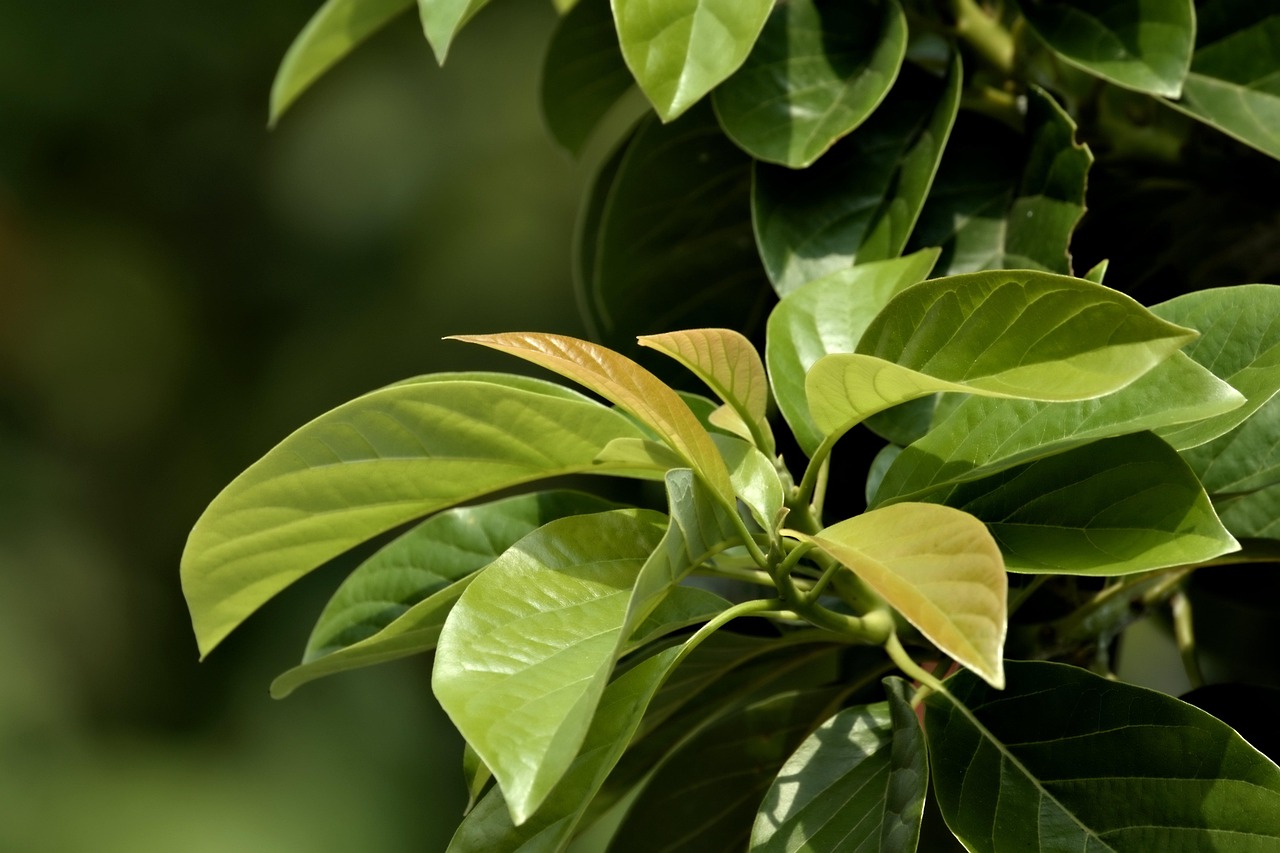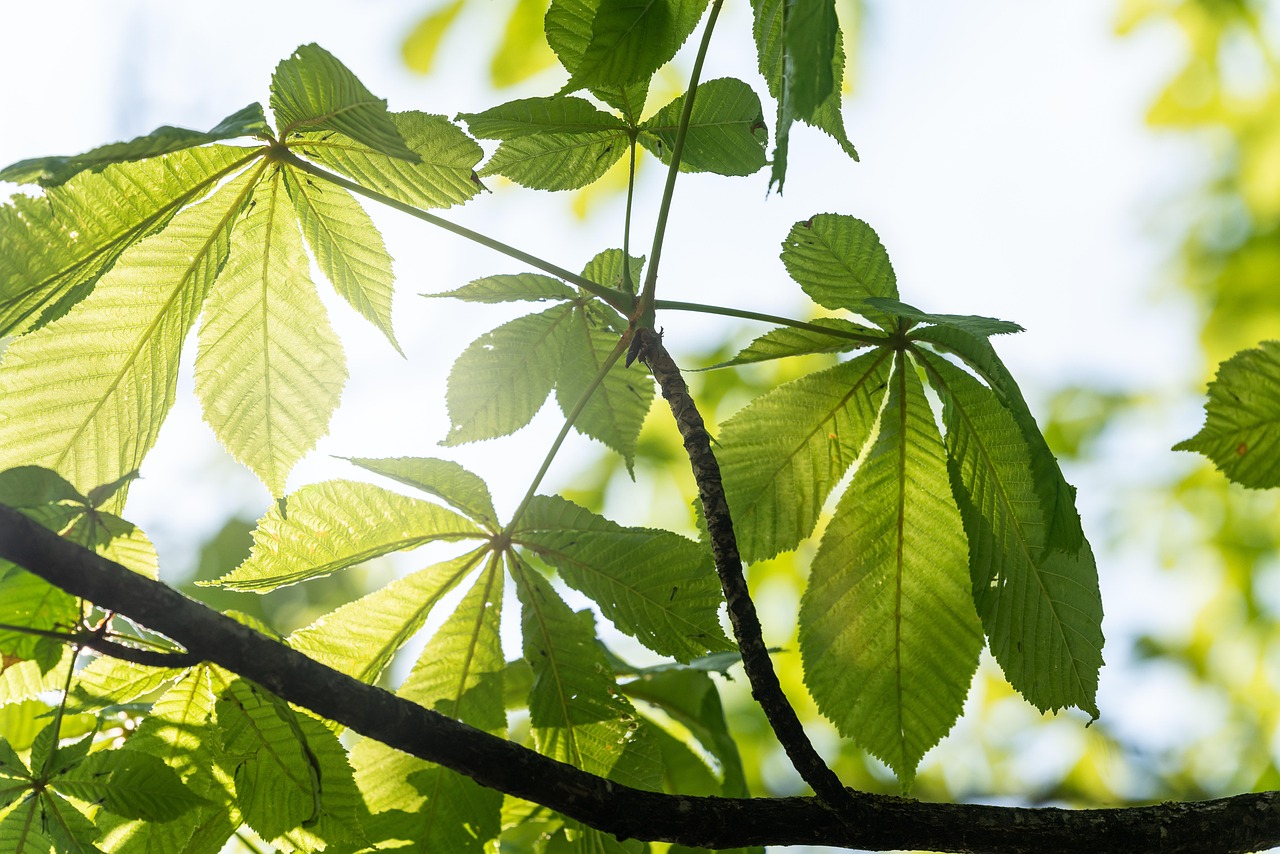Tree growth in the taiga faces significant environmental constraints, including extreme cold, short growing seasons, nutrient-poor soils, and water fluctuations. Despite these challenges, trees have developed unique physical and physiological adaptations, enabling them to survive and sustain the biome. Understanding these factors is vital for conservation and ecosystem management.
The taiga, also known as boreal forest, is a biome characterized by its coniferous forests and harsh environmental conditions. Located primarily in Canada, Alaska, Russia, and Scandinavia, the taiga experiences long winters and short summers. This unique climate greatly impacts the growth of trees and other vegetation.

One of the most significant limiting factors for tree growth in the taiga is temperature. The region experiences extreme cold, especially during winter months when temperatures can plummet below freezing. This cold environment slows metabolic processes in trees, which can hinder their growth. Additionally, the growing season is relatively short, lasting only about 50 to 100 days each year. During this period, trees must rapidly develop foliage and reproductive structures.
Soil quality also plays a crucial role in tree growth. Taiga soils are often acidic and have low nutrient content. This limits the availability of essential nutrients that trees need for growth. The slow decomposition of organic matter in cold temperatures further exacerbates this issue, making it difficult for trees to access the nutrients they require.
Key Environmental Factors Affecting Tree Growth
Several key environmental factors limit tree growth in the taiga. These factors include:

- Temperature: Prolonged cold periods restrict growth rates.
- Growing Season: Limited duration of optimal growth conditions.
- Soil Nutrients: Low nutrient availability affects tree health.
- Water Availability: Seasonal fluctuations impact access to moisture.
- Light Availability: Short days in winter reduce photosynthesis.
Cold temperatures not only affect growth but also influence the types of tree species that can survive in the taiga. For example, coniferous trees such as spruce, fir, and pine are well-adapted to these conditions. Their needle-like leaves reduce water loss and their conical shape allows snow to slide off, preventing branch breakage. However, these adaptations also mean that these trees grow slowly compared to deciduous species found in more temperate climates.
Water availability is another critical factor in tree growth within the taiga. While precipitation levels can be moderate, much of it falls as snow during winter months. The ground can freeze solid, making it difficult for trees to access water during crucial growth periods. In addition, spring thaws may lead to a brief period of water availability, but by summer, moisture levels can drop significantly due to evaporation and transpiration.
The light environment in the taiga also poses challenges for tree growth. During winter, long periods of darkness limit photosynthesis. In contrast, during the summer months, trees must compete for sunlight as they grow rapidly to take advantage of the longer days. This competition can affect overall tree health and growth rates as well.

| Factor | Description | Impact on Trees |
|---|---|---|
| Temperature | Extreme cold temperatures | Slows metabolic processes and growth rates |
| Growing Season | Short duration of warm weather | Limits time for trees to develop |
| Soil Nutrients | Acidic and nutrient-poor soils | Affects tree health and growth |
| Water Availability | Seasonal fluctuations in moisture | Limits access to necessary water |
| Light Availability | Long winter nights and summer competition | Affects photosynthesis and growth rates |
The interplay between these factors creates a challenging environment for tree species in the taiga. Understanding these limitations is essential for studying forest dynamics and conservation efforts in this vital biome.
Pro-Tips / Common Mistakes to Avoid
- When I first studied taiga trees, I underestimated how much cold affects their growth. Always remember, trying to compare their growth rates directly with temperate trees can be misleading—these trees grow slowly for a reason!
- In my early experiments with soil samples, I overlooked the acidity and nutrient-poor nature of taiga soils. Always test soil directly before planting or making assumptions about its fertility—these soils rarely have many nutrients, and that impacts growth.
- When I first considered water availability, I thought rainfall was the main source. I then realized that during winter, the ground is frozen, making water access tricky. Always account for seasonal water availability and soil moisture near the surface, especially during spring thaws.
- In the beginning, I believed that more sunlight always meant better growth. But in the taiga, the short growing season and long winter nights mean that trees are adapted to maximize photosynthesis during the brief summer—don’t underestimate the importance of seasonal light changes.
- I initially ignored the importance of tree adaptations, such as conical shapes and needle-like leaves. Remember, these physical traits are critical in dealing with snow load, cold, and water conservation—don’t overlook their significance.
- When observing human impact, I once assumed sustainable logging was enough. But even sustainable practices need strict monitoring—illegal logging and industrial activities can rapidly degrade taiga forests if not properly managed.
- In my early conservation efforts, I thought protected areas alone would suffice. However, involving local communities through education and economic incentives strengthens long-term sustainability—conservation is a collaborative effort.
- When I first looked into climate change effects, I believed longer growing seasons would always benefit trees. But extended warm periods can increase pests and lead to ecosystem imbalances—climate impacts are complex and require comprehensive management.
Adaptations of Trees in the Taiga
Despite the numerous challenges posed by their environment, trees in the taiga have evolved several adaptations that allow them to survive and thrive. These adaptations are crucial for coping with cold temperatures, limited nutrients, and varying moisture levels. Understanding these modifications provides insight into how these trees interact with their ecosystem.
Physical Adaptations
The physical characteristics of taiga trees play a significant role in their survival. Notable adaptations include:

- Needle-like Leaves: The leaves of coniferous trees are shaped like needles. This design minimizes water loss through transpiration, which is essential in a region where moisture can be scarce.
- Conical Shape: The conical shape of many taiga trees allows snow to slide off easily. This reduces the risk of branches breaking under heavy snow accumulation.
- Thick Bark: Thick, insulating bark protects trees from extreme cold. It also helps to prevent water loss during dry periods.
- Shallow Root Systems: Many trees have shallow root systems that spread widely. This adaptation allows them to quickly absorb moisture from the top layers of soil, especially during the short growing season.
Physiological Adaptations
In addition to physical adaptations, trees in the taiga exhibit various physiological responses that enhance their ability to cope with environmental stressors. These include:
- Antifreeze Proteins: Some tree species produce antifreeze proteins that prevent ice formation within their cells. This is vital for survival during freezing temperatures.
- Photosynthesis Regulation: Trees adjust their photosynthetic processes based on light availability. During long summer days, they maximize their photosynthesis, while minimizing it during dark winter months.
- Deciduous Traits: Some tree species can become semi-deciduous, shedding some leaves in response to environmental stress. This reduces water loss during unfavorable conditions.
Species Diversity in the Taiga
The taiga is home to a limited range of tree species compared to more temperate forests. However, the species present are well-adapted to withstand the harsh conditions. The most common tree species found in the taiga include:
- Spruce (Picea spp.): Known for its tall, straight trunks and conical shape, spruce is a dominant species in many taiga regions.
- Pine (Pinus spp.): Pines are highly adaptable and can thrive in nutrient-poor soils. Their flexible needles help them endure heavy snowfall.
- Balsam Fir (Abies balsamea): This species is well-known for its fragrant resin and is often used as a Christmas tree.
- Larch (Larix spp.): Unlike most conifers, larches are deciduous and shed their needles in autumn, adapting to seasonal changes.
The diversity of tree species in the taiga is limited compared to other biomes. However, each species plays a unique role within the ecosystem. For example, spruce and fir provide critical habitats for various wildlife, while pine trees help stabilize soil and prevent erosion.
Impact of Climate Change on Taiga Forests
Climate change poses significant risks to taiga forests. As global temperatures rise, the taiga faces both direct and indirect consequences. Some potential impacts include:
- Longer Growing Seasons: Warmer temperatures may extend the growing season, potentially allowing for increased growth rates. However, this could also lead to competition among species.
- Increased Insect Infestations: Warmer temperatures can facilitate the spread of pests and diseases that threaten tree health.
- Altered Precipitation Patterns: Changes in rainfall can affect water availability, impacting tree growth and overall forest health.
- Shift in Species Distribution: As conditions change, some species may migrate northward or to higher elevations, altering the composition of taiga forests.
The effects of climate change on taiga forests highlight the need for continued research and conservation efforts. Understanding how these forests respond to environmental changes is crucial for developing effective management strategies.
Human Impact on Taiga Forests
Human activities have a profound influence on the taiga biome, affecting tree growth and the overall health of these forests. Various factors, including logging, industrial development, and climate change, contribute to significant alterations in the taiga environment.
Deforestation and Logging
Logging is one of the most direct human impacts on taiga forests. The extraction of timber for construction, paper products, and fuel can lead to:
- Habitat Destruction: Deforestation disrupts ecosystems and displaces wildlife that depend on trees for shelter and food.
- Soil Erosion: Removing trees can lead to soil erosion, as there are fewer roots to hold the soil in place. This can also affect water quality in nearby streams and rivers.
- Nutrient Loss: The removal of trees impacts the nutrient cycle, as fallen leaves and organic matter that normally enrich the soil are no longer present.
Although sustainable logging practices are being promoted, illegal logging still occurs in many regions. This undermines efforts to conserve the taiga and its biodiversity.
Industrial Development
Industrial activities, such as mining and oil extraction, pose additional threats to taiga forests. These activities can result in:
- Pollution: Industrial processes often release pollutants into the air and water, which can harm both plant and animal life.
- Land Fragmentation: Roads and other infrastructure disrupt natural habitats, making it difficult for species to migrate and reproduce.
- Resource Depletion: The extraction of natural resources can lead to long-term ecological damage, affecting tree growth and forest regeneration.
Climate Change as a Human Impact
Climate change is exacerbated by human activities, particularly the burning of fossil fuels. This global phenomenon significantly affects taiga forests through:
- Increased Temperature: Rising temperatures can stress tree species that are already adapted to cold climates, leading to decreased growth rates.
- Altered Ecosystems: Changes in temperature and precipitation patterns can shift species distributions, potentially leading to the decline of some native species.
- Pests and Diseases: Warmer conditions may favor the proliferation of pests and pathogens that threaten tree health, resulting in increased mortality rates.
Conservation Efforts in the Taiga
Given the numerous challenges faced by taiga forests, conservation efforts are crucial. Various strategies are being implemented to protect these vital ecosystems, including:
Protected Areas
The establishment of protected areas helps safeguard critical habitats from deforestation and industrial activities. These areas allow ecosystems to function naturally and provide refuge for wildlife. Some key aspects include:
- National Parks: Many countries have designated national parks within the taiga to preserve its unique biodiversity.
- Wildlife Reserves: Reserves specifically aim to protect endangered species that rely on taiga forests for survival.
- Sustainable Practices: Promoting sustainable land management practices within protected areas ensures that resources are used responsibly while maintaining ecological balance.
Reforestation and Afforestation
Reforestation and afforestation initiatives aim to restore degraded areas of taiga forest. These efforts include:
- Tree Planting Programs: Community-led tree planting initiatives help replenish tree populations and restore habitats.
- Native Species Focus: Using native species for reforestation ensures that local ecosystems remain intact and resilient.
- Erosion Control Measures: Techniques such as planting cover crops help prevent soil erosion while promoting healthy tree growth.
Community Involvement in Conservation
The success of conservation efforts often relies on community involvement and education. Engaging local populations can foster a sense of stewardship towards taiga forests. Key strategies include:
- Acknowledging Indigenous Knowledge: Indigenous communities often possess valuable knowledge about local ecosystems. Involving them in conservation efforts can lead to more effective management strategies.
- Educational Programs: Raising awareness about the importance of taiga forests encourages local communities to participate in conservation initiatives.
- Sustainable Economic Opportunities: Promoting eco-tourism and sustainable forestry can provide economic incentives for communities to protect their natural resources.
The ongoing protection of taiga forests requires a multifaceted approach that addresses both natural limitations and human impacts. Collaborative efforts among governments, organizations, and local communities are crucial for ensuring the sustainability of this unique biome.
Future Research Directions in Taiga Forests
As human impacts and climate changes continue to evolve, ongoing research in taiga forests is essential for understanding how these ecosystems function and adapt. Future studies could focus on several key areas:
- Long-term Climate Monitoring: Establishing comprehensive climate monitoring systems can provide data on temperature and precipitation changes that affect tree growth.
- Impact of Invasive Species: Researching the introduction of non-native species can help understand their effects on local flora and fauna, as well as potential management strategies.
- Forest Regeneration Processes: Investigating how taiga forests regenerate after disturbances—such as logging or fire—can improve restoration practices and enhance forest resilience.
- Carbon Sequestration Studies: Analyzing the ability of taiga forests to sequester carbon can help gauge their role in mitigating climate change.
These research directions are vital for developing informed strategies that address both conservation and sustainable management of taiga forests. They can also assist policymakers in implementing effective environmental regulations.
Technological Innovations in Conservation
Advancements in technology are playing an increasingly important role in the conservation of taiga forests. Some notable innovations include:
- Remote Sensing: Satellite imagery and drone technology allow for real-time monitoring of forest health, deforestation rates, and the impact of climate change.
- Geographic Information Systems (GIS): GIS technology aids in mapping forest resources and planning conservation efforts by analyzing spatial data.
- Biotechnology: Genetic studies of tree species may lead to the development of more resilient varieties that can withstand climate stresses and pests.
Embracing these technological advancements can enhance conservation efforts, making them more efficient and impactful. By integrating technology into conservation strategies, stakeholders can better protect the unique biodiversity present in taiga forests.
Community Education and Engagement
Effective conservation of taiga forests cannot happen without engaging local communities. Education programs should emphasize the importance of biodiversity and sustainable practices. Key components may include:
- Workshops and Training: Providing hands-on workshops can teach community members about sustainable forestry practices, reforestation techniques, and biodiversity conservation.
- Involvement in Research Projects: Encouraging community participation in research can foster a sense of ownership and responsibility toward local ecosystems.
- School Programs: Integrating environmental education into school curricula can raise awareness among younger generations about the importance of taiga ecosystems.
Building strong connections between communities and their natural environment is essential for fostering long-term stewardship of taiga forests. Empowering local populations through education ensures that conservation strategies are supported and maintained over time.
Conclusion
The taiga is a unique and vital biome that faces numerous challenges due to environmental factors and human impacts. Cold temperatures, short growing seasons, nutrient-poor soils, and water availability limit tree growth in this region. However, the trees have adapted remarkably to survive under these conditions. As we have explored, human activities, particularly deforestation and industrial development, pose significant threats to these forests.
Conservation efforts are critical to safeguarding taiga ecosystems. Implementing protected areas, promoting reforestation, and involving local communities are all essential components of a successful conservation strategy. Moreover, ongoing research and technological advancements will play a vital role in understanding and protecting these ecosystems for future generations.
By recognizing the importance of the taiga and committing to its preservation, we can ensure that this unique forest continues to thrive, supporting diverse wildlife, regulating global climate, and contributing to the overall health of our planet.
